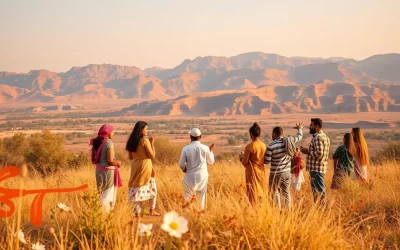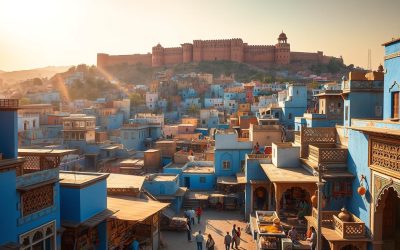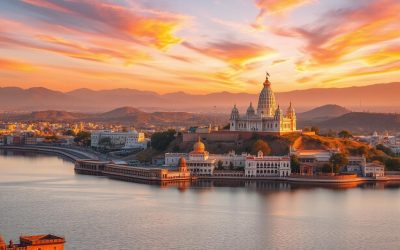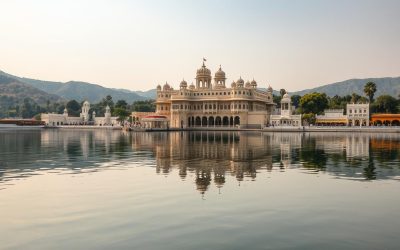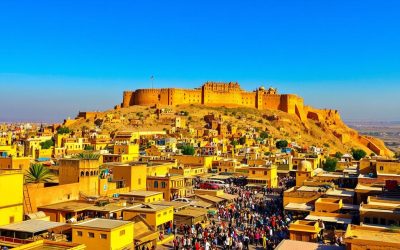You’re about to embark on a journey to a land of diverse cultures, traditions, and varied climates. The best time to visit this vibrant state is crucial for a memorable experience.
Between October and April, the weather is neither too hot nor too cold, making it ideal for exploring the colorful markets, majestic forts, and cultural treasures.
Understanding the seasonal variations will help you plan your trip effectively, ensuring you make the most of your time in Rajasthan. Whether you’re interested in desert safaris, wildlife spotting, or festival celebrations, the right time can make all the difference.
Understanding Rajasthan’s Diverse Climate
Rajasthan’s climate is as diverse as its landscapes, ranging from the arid Thar Desert to the lush green hills of Udaipur. As you explore this vast state, you’ll notice how its geography significantly influences its climate. The varied landscape creates distinct microclimates across different regions, making Rajasthan a fascinating place to visit at different times of the year.
Geographical Variations Across the State
The arid Thar Desert, bordering Pakistan, is known for its extreme temperatures and low rainfall. In contrast, southern cities like Udaipur experience a more temperate climate. The Aravalli mountain range, stretching across the state, is the source of several cooling rivers and plays a crucial role in shaping the local climate. You’ll find that places like Mount Abu, with its higher altitude, have cooler temperatures compared to desert cities like Jaisalmer.
- The Aravalli range creates a rain shadow effect, impacting rainfall patterns.
- Geographical features like lakes and rivers contribute to unique local climate conditions.
- Altitude differences significantly affect temperatures across the state.
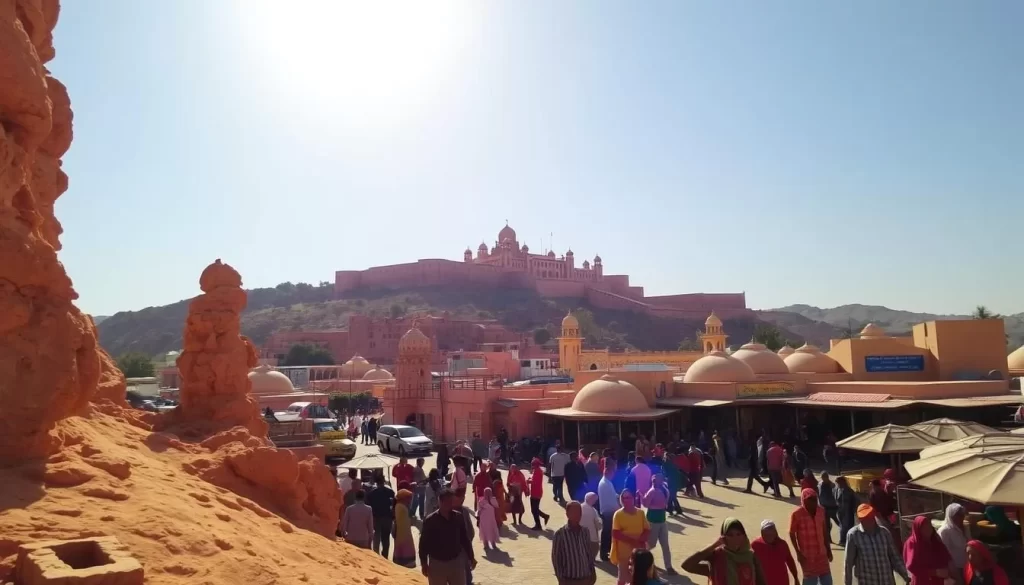
The Four Distinct Seasons of Rajasthan
Rajasthan experiences four distinct seasons, each transforming the landscape and visitor experience. You’ll enjoy pleasant weather during the winter months, while the summer brings extreme heat. The monsoon season transforms the arid landscape into a lush green oasis, and autumn brings a gentle coolness to the state. Understanding these seasonal changes is key to planning your trip to Rajasthan at the right time.
Key seasonal highlights include:
- Winter: Perfect time for exploration with pleasant weather.
- Monsoon: The desert state transforms into a lush green landscape.
- Summer: Extreme heat, but a good time for experiencing local culture.
- Autumn: A gentle coolness follows the monsoon rains.
Winter Season: The Prime Time to Visit Rajasthan
The winter season, spanning from October to March, is considered the best time to visit Rajasthan. This period offers the most comfortable weather conditions for exploring the state’s outdoor attractions.
October to March: Perfect Weather for Exploration
During these months, Rajasthan experiences a pleasant temperature range of 10-25 °C, making it ideal for sightseeing. However, it’s essential to note that the desert regions can get quite chilly, especially at night, with temperatures sometimes reaching as low as -2℃ in cities like Jaisalmer.
Winter Festivals and Cultural Celebrations
October and November are festival months in Rajasthan, with events like Diwali, the Pushkar Camel Festival, and Jodhpur’s International Folk Festival taking advantage of the cooler evenings. These festivals offer a glimpse into the rich cultural heritage of the state.
The winter season also hosts the Jaipur Literary Festival in January, attracting world-renowned authors, and the Jaisalmer Desert Festival in February, featuring camel races and cultural performances.
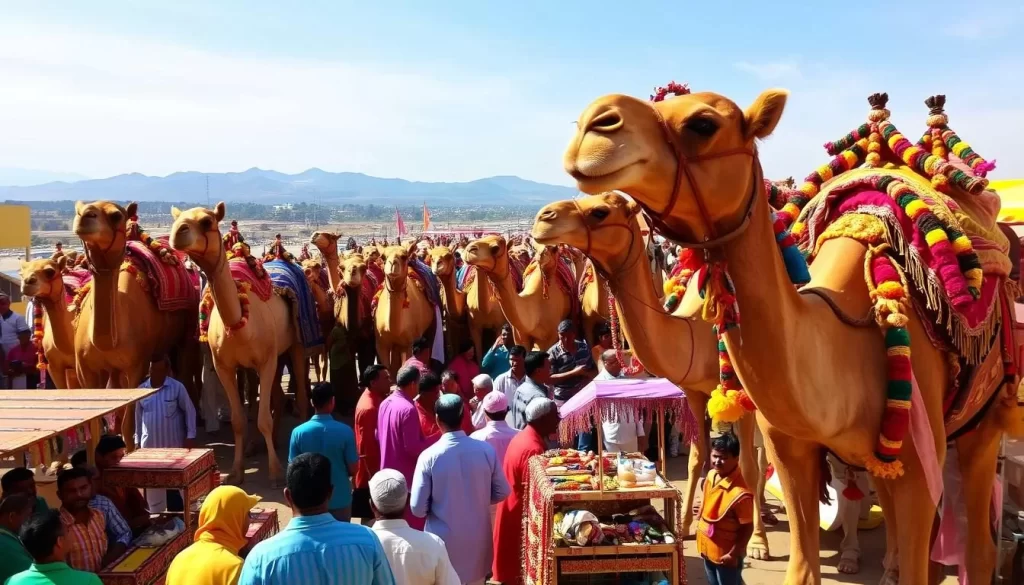
Best Winter Destinations in Rajasthan
Rajasthan offers numerous destinations to explore during the winter season. You can visit the Pink City of Jaipur, explore the desert fortress of Jaisalmer, or enjoy a desert safari. Wildlife enthusiasts can spot tigers at Ranthambore National Park, while culture enthusiasts can explore the magnificent forts and palaces.
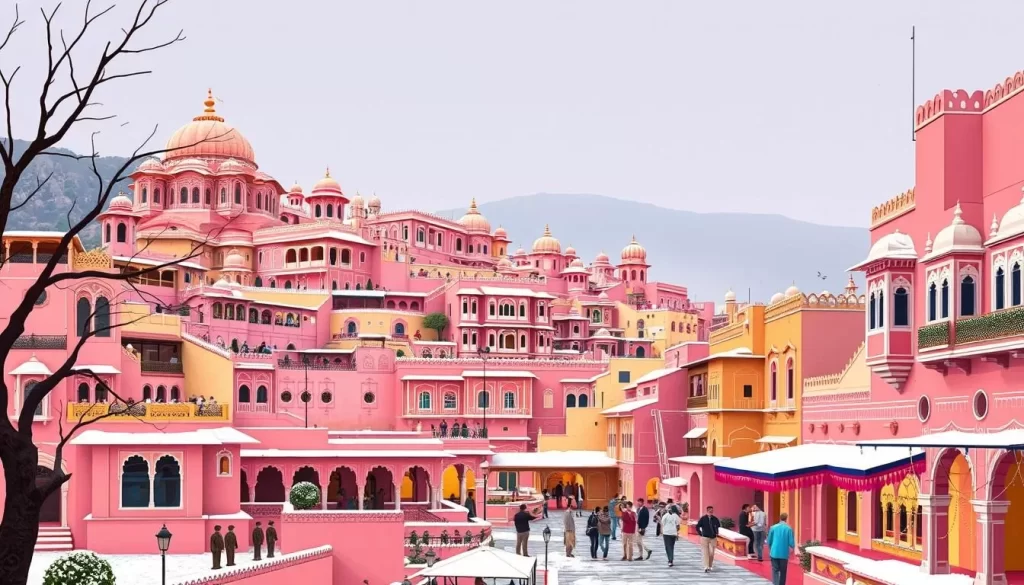
In conclusion, the winter season is the best time to experience Rajasthan’s diverse heritage, with its pleasant weather, rich cultural festivals, and exciting activities. Whether you’re a photographer, culture enthusiast, or adventure seeker, Rajasthan has something to offer during the winter months.
Monsoon Magic: July to September
July to September is not just a period of rain in Rajasthan; it’s a season of transformation, beauty, and romance. As the monsoon clouds gather, the arid landscapes of Rajasthan are rejuvenated, turning the state into a vibrant and colorful destination.
The Lush Green Transformation of the Desert State
The monsoon season brings a dramatic change to Rajasthan’s landscape. The dry, barren lands turn into lush green expanses, and the state’s flora is revitalized. This transformation makes Rajasthan a unique and attractive destination during the monsoon season, from July to September.
Mount Abu and Hill Stations During Monsoon
Mount Abu, the only hill station in Rajasthan, becomes a popular destination during the monsoon season. The cooler temperatures and scenic beauty offer a perfect respite from the heat of the plains. Visitors can enjoy trekking, sightseeing, and exploring the natural beauty of Mount Abu.

Lakes, Wildlife, and Romantic Getaways in the Rainy Season
The monsoon rains bring Rajasthan’s lakes to life, particularly in Udaipur, where boating on Lake Pichola becomes a magical experience. The monsoon season is also an ideal time to visit Keoladeo National Park, known for its rich wildlife and bird species. Couples can enjoy a romantic getaway in the picturesque settings of Rajasthan, making it an ideal time to visit for honeymooners.
The monsoon season in Rajasthan is not just about the landscapes; it’s also a time for festivals and celebrations. Cities like Bundi are known for their peacocks, rainbows, and the vibrant Teej Festival, adding to the state’s charm during this period.
Summer Months: Beating the Heat in Rajasthan
Summer in Rajasthan is characterized by high temperatures, but with the right strategies, you can still enjoy your trip. The state experiences a significant rise in temperature during the summer months, ranging from 30℃ to 45℃. While this might seem daunting, there are ways to navigate this challenging season and make the most of your visit.
April to June: Navigating the Hot Season
The summer season in Rajasthan, spanning from April to June, is marked by extreme heat and humidity. To make the most of your trip during this time, it’s essential to plan your daily activities around the heat. Visiting popular attractions early in the morning or later in the evening can make your experience more enjoyable. Additionally, staying hydrated and wearing appropriate clothing can help you beat the heat.
Summer Festivals and Cultural Events
Despite the challenging weather, summer in Rajasthan is not without its cultural attractions. The season hosts several festivals that showcase the state’s rich heritage. For instance, the Summer Festival in Mount Abu, organized by the Rajasthan Government, is a significant event that features traditional music, boat races, and other cultural activities. Similarly, Jaipur’s Elephant Festival and the Gangaur Festival are vibrant celebrations that take place during this time, offering a glimpse into Rajasthan’s cultural traditions.
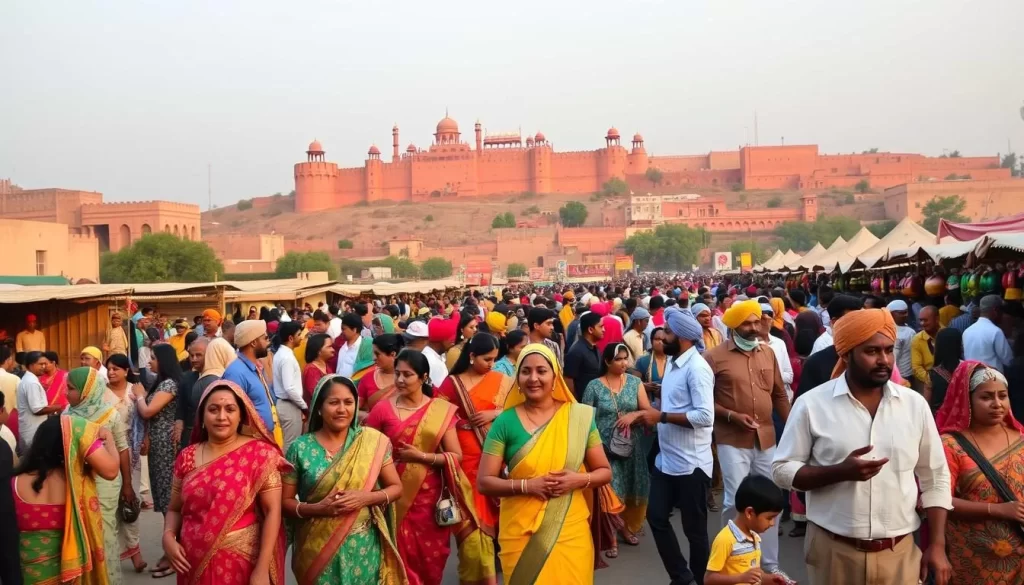
Best Places to Visit During Summer in Rajasthan
Some destinations in Rajasthan are more suitable for summer visits than others. Mount Abu, with its cooler climate due to its elevation, is a popular retreat during the hot season. Other places like Udaipur, with its serene lakes, and cities like Jodhpur and Jaipur, which offer a wealth of cultural experiences, can be visited with proper planning. These locations not only provide relief from the heat but also offer unique adventure and sightseeing opportunities.
By understanding the challenges and opportunities presented by Rajasthan’s summer, you can plan a trip that is both enjoyable and memorable. Whether you’re looking to experience the local culture, enjoy the natural beauty, or simply find a cooler retreat, Rajasthan has something to offer even during the hottest months.
Planning Your Perfect Rajasthan Trip: Month-by-Month Guide
Rajasthan’s varied weather conditions make timing everything for a perfect trip. Understanding the best time to visit this vibrant state is crucial for a memorable experience.
Best Months for Wildlife Enthusiasts and Tiger Spotting
For those heading to Ranthambore National Park, the best time to visit is between October and March. The winter season offers ideal weather, with lush green surroundings and an enchanting atmosphere, making it perfect for spotting tigers and other wildlife.
Ideal Timing for Photography and Sightseeing
The period from October to March is also ideal for photography enthusiasts, with perfect lighting conditions and vibrant cultural activities. You’ll capture stunning images of Rajasthan’s majestic landscapes and monuments.
When to Experience the Golden Triangle
For those interested in the Golden Triangle tour, which includes Delhi, Agra, and Jaipur, the best time to visit is from October to February. This period offers comfortable weather for sightseeing and exploring the rich history and culture of these cities.

Conclusion: Making the Most of Your Weather-Savvy Rajasthan Trip
As you plan your trip to Rajasthan, understanding the best time to visit is crucial for a memorable experience. The ideal time to visit Rajasthan is between October and April, when the weather is neither too hot nor too cold.
During this period, you can enjoy pleasant weather and various cultural events, making your trip to Rajasthan truly unforgettable. Whether you’re interested in experiencing the vibrant monsoon season or the cultural festivals of winter, Rajasthan has something to offer throughout the year.
By planning your trip according to the season, you can make the most of your visit and enjoy activities like the Pushkar Camel Fair or boat races during the monsoon. With careful planning, your Rajasthan adventure will be a memorable one.
The above is subject to change.
Check back often to TRAVEL.COM for the latest travel tips and deals.


